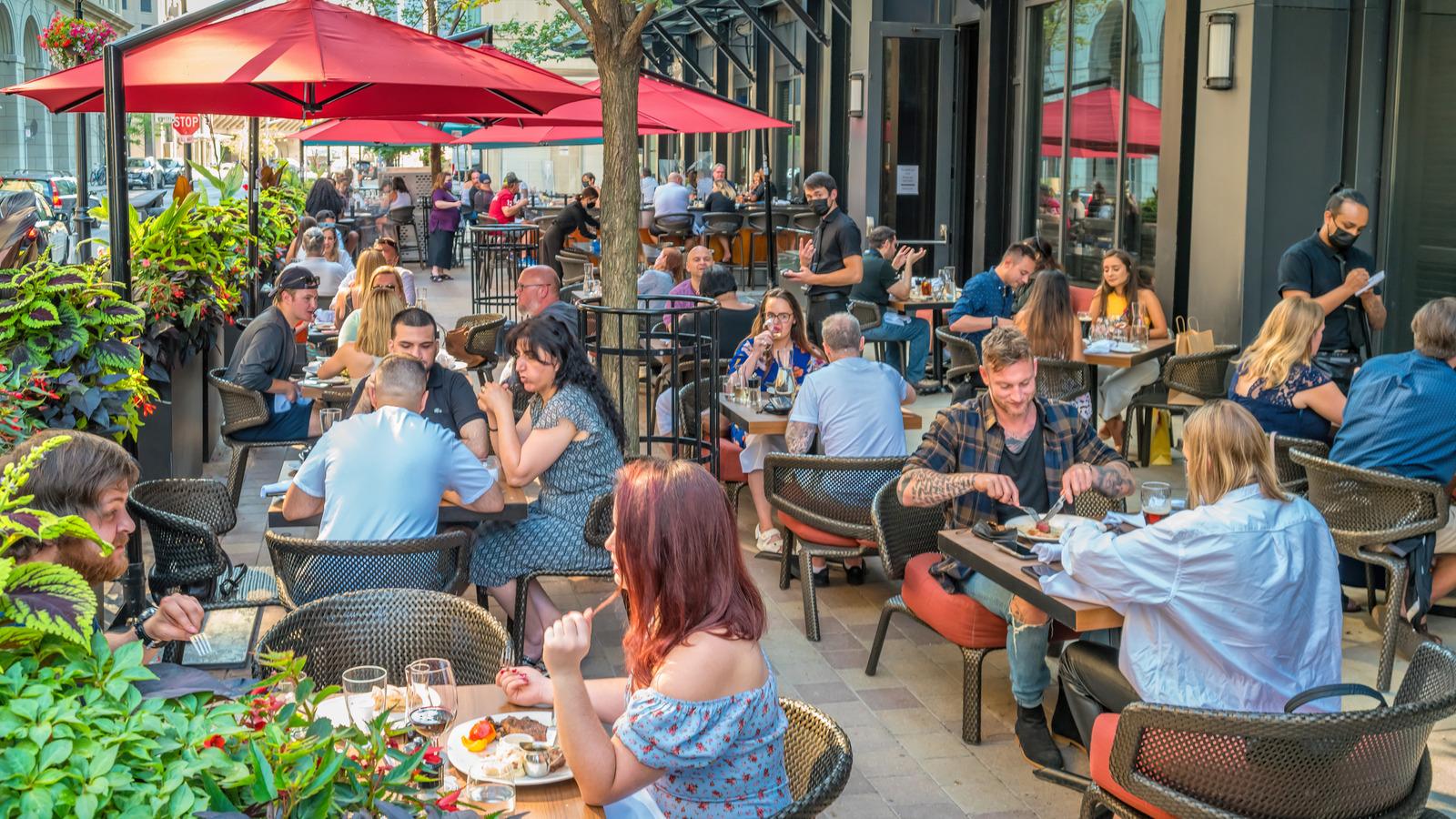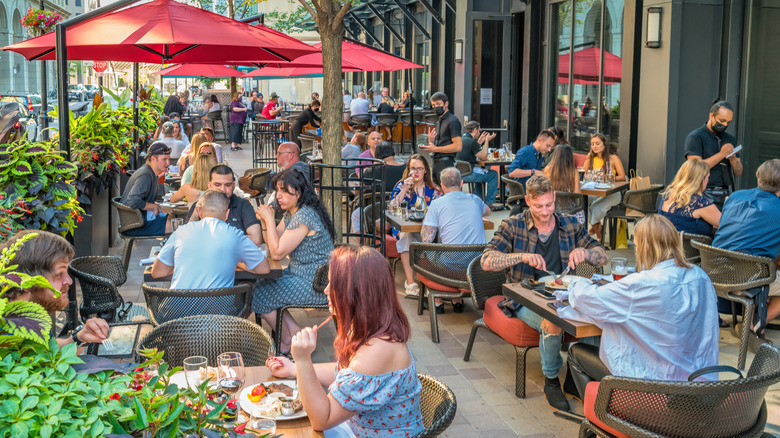
Benedek/Getty Images
In today's Instagram era, food is not just fuel -– it's an experience. Food bloggers, Instagram-worthy meals, and the ever popular "foodie" movement have helped get people going out to eat, but they're not the only factors driving the trend. Outdoor dining has become popular, with more restaurants making provision for it as a result of the Covid-19 pandemic. Sipping a creamy Horchata-inspired latte under a patio umbrella or cutting into a juicy steak beneath twinkling string lights elevates a dining experience.
While an outdoor atmosphere is great for a first date or a weekend brunch with friends, not many people pause to consider the less glamorous side of dining alfresco. Besides the clink of wine glasses, neatly plated meals, and genuinely tasty food, there are some real risks of dining outside. Some of them are minor nuisances honestly, but some are slightly more substantial.
We're not here to terrify you into self-quarantine or abandoning your cherished café corner. This is just a reality check. After all, prevention is better than cure. The whole point is to pull back the curtain on what is sometimes seen as a carefree experience and to help you tread carefully. So before you make that next reservation for a table on a patio, let's take a closer look at what may be hiding behind the scent of fresh air and fairy lights.
Risk of vehicle accidents
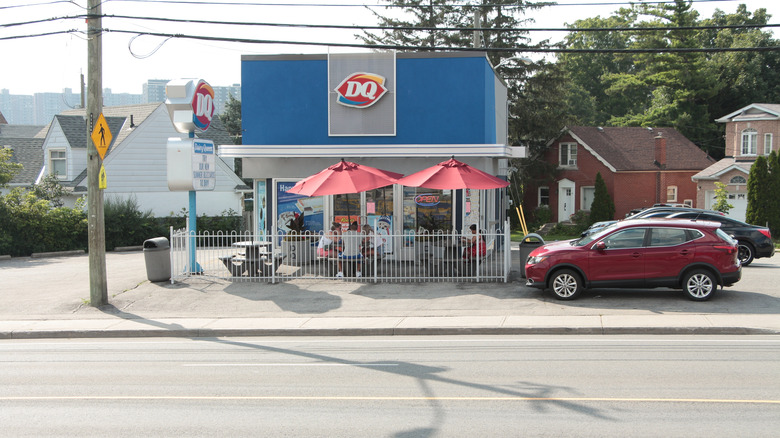
PenguinLens/Shutterstock
What a lot of diners don't realize is how exposed some outdoor spots can be, particularly if (as so many are) near roads, driveways or parking lots. What separates a peaceful brunch from disaster is sometimes just a flimsy planter box or a short decorative fence. Because of Covid many restaurants moved to outdoor dining, but by August of 2020, least 20 cases of cars crashing into outdoor dining setups were recorded in the U.S. — a jump from an average of four cases per year from the previous eight years. The reasons can vary from distracted drivers, vehicle malfunctions, drunk drivers, or just plain old human error. The problem is that outdoor patios are always the first to take the hit — quite literally.
For restaurant diners, this puts them in the direct line of fire and sometimes results in death. For restaurant owners, it presents nasty liability issues. Sure, a sidewalk table is usually great for people-watching, but it could also put diners in the direct line of vehicles pulling in, parking, or swerving off-road. Thinking of where to sit shouldn't be a safety calculation, but when streets and steaks are kept apart by little more than a potted plant, maybe it doesn't hurt to exercise caution.
Burn hazards from outdoor heaters
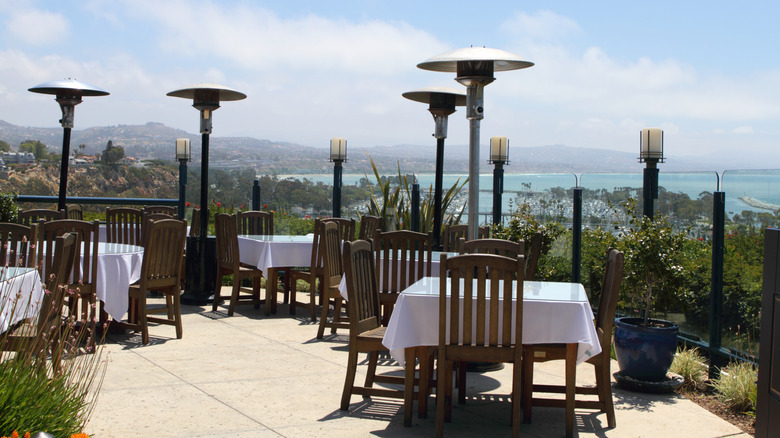
Behindthelens/Getty Images
A lot of restaurants now use outdoor heaters on their patios to help keep customers warm. These appliances will allow you to be outside for dinner under the stars without having to shiver through your entrée. But as cozy and inviting as they can be, they also invite one of the hazards of al fresco dining that is most often overlooked –- burns.
Most outdoor heaters run on propane, electricity, or natural gas, and emit a significant amount of heating. The surfaces — in particular, metal housings and grates — can get hot enough to inflict very ugly skin burns in no time. When these heaters crowd tables, chairs, or walkways, they become accidental body-bumping points for diners and staff navigating life in tight spaces. Children are particularly vulnerable. A little curiosity, or a moment of distraction, and a child can lean against a hot surface. Adults aren't immune to the risks though and can also easily accidentally bump into one of these heaters. We get it, heaters are a necessity to help you stay warm, but without proper placement and awareness, they can quickly become a literal hot spot for injury.
Uneven and slippery surfaces
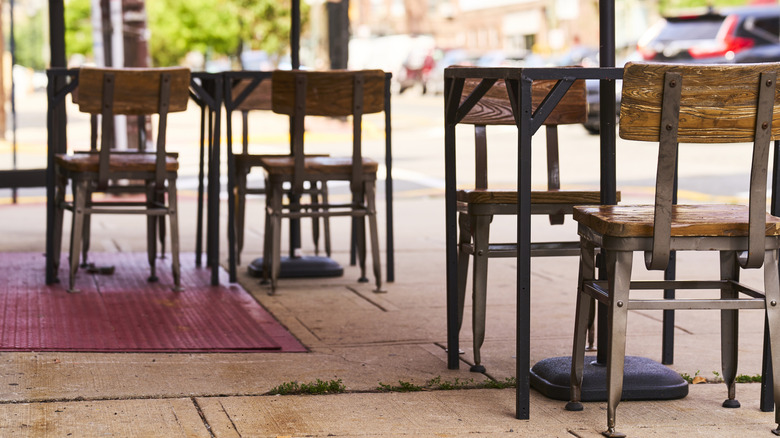
Aire Images/Getty Images
Outdoor dining areas can be charming with brick patios, cobbled walkways, charming rustic wooden decks, but lurking behind that aesthetic charm can be severe structural problems. This is because patio floors are sometimes different from indoor restaurant floors which are usually flat, smooth and consistently maintained, so outdoor surfaces are more of a wild card. Cracked pavement, loose tiles, unevenly spaced pavers or a slope can transform a delightful meal into a scene of disaster. Unfortunately for waiters and diners, these glitches aren't just something annoying, as one small slip can lead to injury.
A slightly tilted chair or an uneven table leg can cause a drink to spill, a plate to slide, or worse, a person to fall. Falling or tripping over cracked floorboards or ill-placed furniture is not uncommon –- especially when a room is overcrowded, poorly lit, or hastily arranged. It is especially dangerous for older adults that have mobility issues or children scurrying around underfoot since some of these patios are on what is meant to be a sidewalk. So even though outdoor dining can seem charming, it often sacrifices function over visual appeal. Unfortunately, diners are the ones who pay when style or convenience trumps safety.
Sudden bad weather

Piranka/Getty Images
Outside dining is dependent on good weather for it to be a success, and weather is not always cooperative. A pleasant, sunny lunch can suddenly become a frenzied dash for shelter as clouds appear and the weather takes a turn for the worse. A sudden thunderstorm or a stiff wind knocking umbrellas and other objects downcan ruin an otherwise pleasant meal.
Rain is a big perpetrator and slippery floors, soaked furniture, and waterlogged food are just the start. Slick tiles and stone can become extremely slippery and dangerous due to wet weather conditions. Worse, if electrical gadgets or extension cords are used on restaurant patios and aren't properly secured or are damaged, the risk of water plus electricity becomes a real hazard.
And then there is the sun: Without proper cover, diners could end up sitting for a significant time under the sun, bathing in UV rays and risking sunburn, dehydration, or heat stroke – particularly for young children, older adults or those with health issues. Even though weather apps and forecasts can be helpful, they don't always give an accurate forecast of how quickly weather conditions can change. Dining outdoors is also dining at the mercy of the elements especially if you live in an area that has unstable weather patterns.
Exposure to airborne pollutants
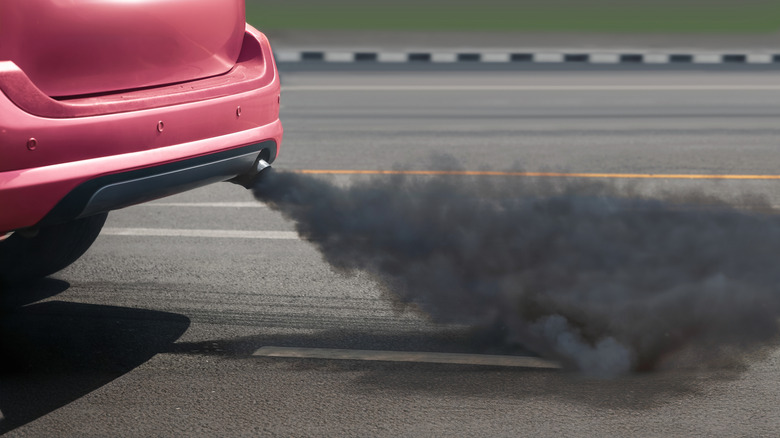
Toa55/Shutterstock
The promise of fresh air is one of outdoor dining's major selling points, but that "freshness" can be inconsistent. Depending on where you are, people dining outside might be getting more than the smell of grilled steak au poivre or blooming flowers with their meal. The whole experience can be ruined by airborne pollutants, such as car exhausts, cigarette smoke, and increasingly, fumes from industrial sources.
Restaurants near major roads or intersections are particularly susceptible to these pollutants. Cars, trucks and motorcycles zoom by, spewing a steady stream of pollutants — carbon monoxide, nitrogen dioxide, and numerous other nasties. These aren't just bad smells, they're chemicals that have been shown to trigger asthma, decrease lung function, and raise the risk of heart and respiratory diseases over time. Not every outdoor table offers clean air. Sometimes, what's in the breeze can be just as important as what's on the menu.
Hidden pests (especially at night)
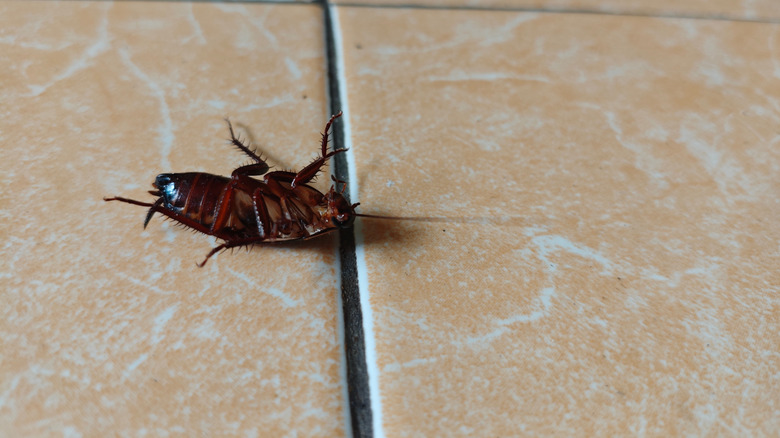
Nugraha 1701/Shutterstock
When the sun goes down and diners begin their leisurely evening meals al fresco, something else comes alive and the shadows come alive with pests. Rats, cockroaches, mosquitoes, and other creatures of the dark get a lot more active at night, particularly in the kinds of environments be near outdoor dining spots, like alleys, dumpsters, backlots, and dimly lit patios.
Besides the unpleasantness of just seeing these pests — they can also pose real health risks. Rodents can spread diseases like salmonella and leptospirosis, while cockroaches can trigger allergic responses and asthma attacks, especially in children. The main problem is that outdoor dining places its guests in closer proximity to these rat and other pest-prone spaces, whereas indoor restaurants are better equipped to keep pests at bay.
Additionally, outdoor spaces do not have the structural defenses that are typical of indoor spaces -– no doors, limited sanitation control, and, often, fewer staff manning the perimeter. Food scraps on the ground, neglected trash containers, and even ambient light that attracts flying insects can suddenly turn a quiet meal into an unexpected pest fest. Outdoor dining may bring you closer to nature, but sometimes that includes the parts you'd rather avoid. And when pests get comfortable, so does the risk to your health and your plate.
Dim or uneven lighting
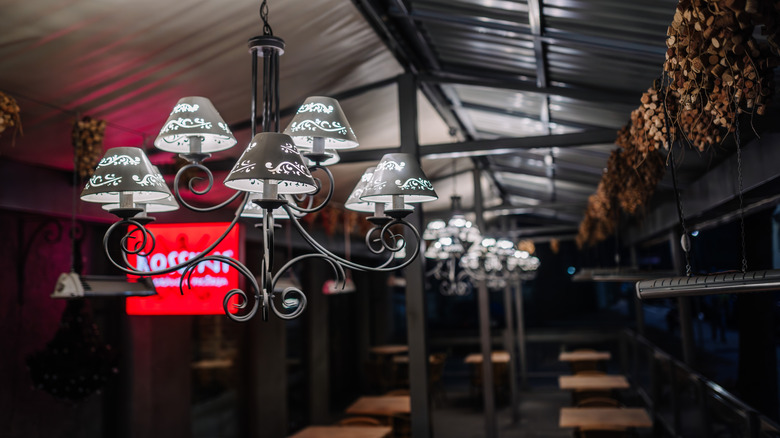
shulers/Shutterstock
We get it, lighting sets the mood, and in outdoor-dining areas that means soft glows and twinkle lights as well. But when ambiance is paid for with visibility, it becomes more than just a design flaw –- it's a possible safety hazard. While dim lighting is not exclusive to outdoor dining, it can be more dangerous in outdoor setups as the risk of falling over uneven surfaces is increased. Inadequate lighting in public spaces — such as sidewalks (which restaurants have been using as an extended setup since Covid) and parking lots — make it difficult to see potential hazards like uneven surfaces or wet floors, increasing the chances of slips and trips.
Also, even if you thought you knew everything you needed to know about steak doneness, under a flickering patio bulb, a medium-rare steak and a rare one can look nearly the same. That may not pose an issue for everyone, but for people at risk – pregnant women, young children, or those with weakened immune systems – consuming undercooked meat can cause nasty, often life-threatening food-borne illness. And it's not just about meat. Low lighting can make it difficult to spot foreign objects or contaminants in your food. Your odds of catching them before your first forkful become very long if you do not have great light to show them up in the first place.
Privacy concerns
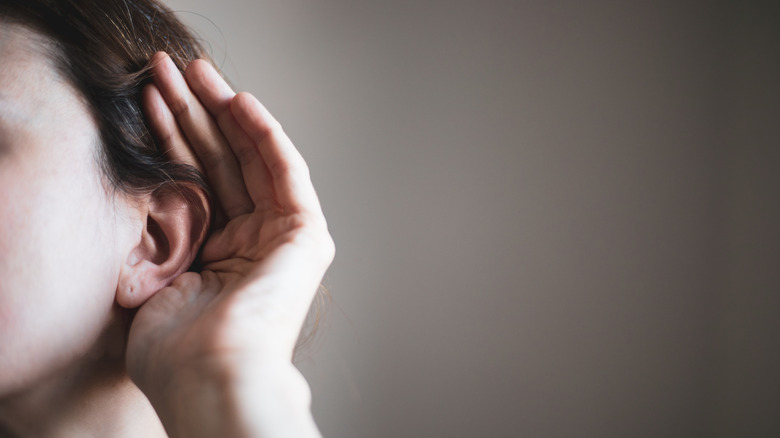
Photographer, Basak Gurbuz Derman/Getty Images
Sitting outside to eat pulls the world in. People casually walk past your table, Uber drivers linger by the curbside, and other diners are sometimes just inches away. Though it may feel casual and fun, that openness is a real privacy vulnerability — one that goes well beyond eavesdropping. Some outdoor dining areas lack proper boundaries or supervision, which can lead to uninvited interactions such as individuals approaching tables and panhandling. While often well-meaning, these encounters can feel intrusive and escalate unexpectedly — especially in busy urban settings. Without physical barriers or attentive staff in place, there's not much to deter strangers from interrupting your meal — or from observing your habits. These encounters — especially when persistent or aggressive — can be unsettling, and even scary , especially for families that would be dining out with children. In rare but serious cases, individuals have reportedly physically threatened diners on patios – turning a al fresco meal into a potentially dangerous encounter
Unfortunately, patio dining makes it that much easier for crooks to eavesdrop or observe habits on open-air sites. They could look for people who appear wealthy or distracted, note when someone eats alone regularly, pick up on details like vacation dates and daily habits.
Unsecured belongings
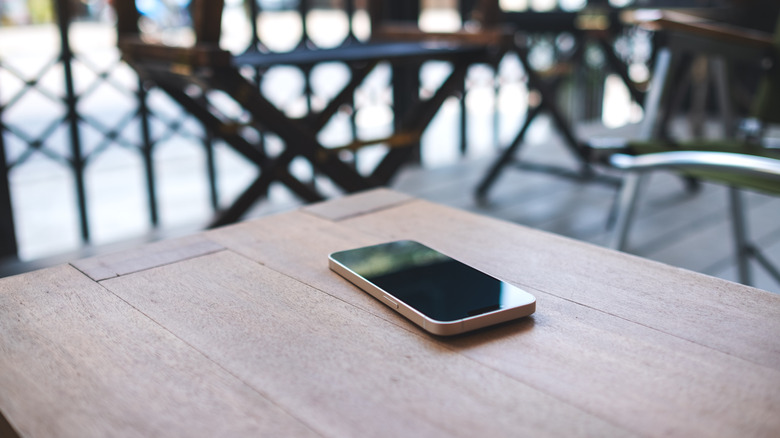
Farknot_architect/Getty Images
Outdoor dining has an air of casual ease, but casual ease often comes with a side of something else — carelessness with personal belongings. With far less architectural structure than walls, booths or hooks for bags, diners are also all the more likely to stow their phone on the edge of the table, for instance, or place their handbag on a chair or drop something on the floor beneath the table, sometimes out of sight and out of mind.
The problem? These places provide ripe opportunities for theft. In an outdoor set up, thieves can walk by on the sidewalk, see a purse parked loosely or a phone left unattended, and make off with it in seconds. Busy, open spaces, particularly in cities, provide cover for these types of grab-and-go crimes. You can be enjoying a raspberry lychee martini on a patio, minding your own business, and not realize something is missing until after the check is cashed. Without the spatial boundaries and storage solutions of indoor setups, personal items in outdoor spaces are often left exposed, unguarded, and vulnerable.
Child safety risks

Maryna_Auramchuk/Shutterstock
For families, outdoor dining is convenient as it brings in extra room for strollers, and less pressure to keep kids pinned to the table. But what might look like a family-friendly setup can expose children to potential passerby on the street who may have malicious intentions, especially in unsecured or poorly supervised outdoor dining areas. Also, in many outdoor dining spaces, especially those that are near the street or parking lot, young children can slip away undetected within seconds.
The danger is particularly high in places that have a lot of people or have driveways or parking areas nearby. Short fences or ropes to partition space are used to some extent by some of the restaurants, but give little resistance or protection for children. The assumption that "somebody will notice" your child slipping away often does not hold up in crowded, distracted restaurants, where the staff is occupied and the diners are focused on their meals. While most parents keep a keen eye out for their children, it only takes a split second of distraction –- grabbing a napkin or paying the check, answering a question — and a child is out of reach. Without hard barriers in place, these spaces for outdoor dining can be a real safety hazard for families, creating a not-so-Hunger Games situation in which a meal becomes a crisis.
Distance from emergency exits
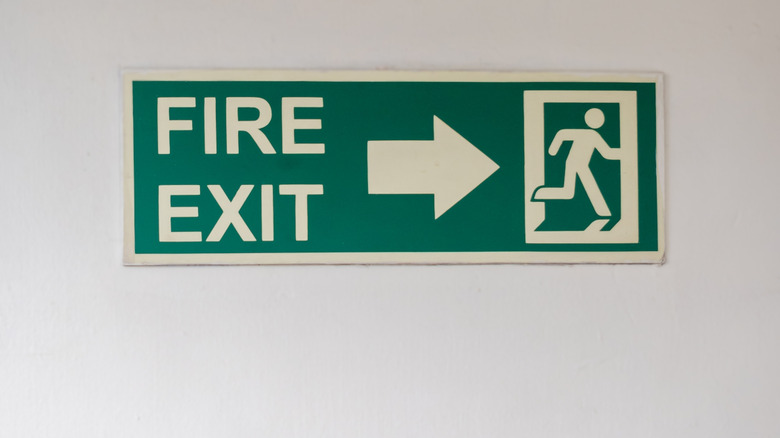
Kirti Bhole/Shutterstock
In an emergency, speed and clarity are important. Whether it's fire emergencies, gas leaks, or severe weather, knowing how to escape a space in a mad rush can mean the difference between life and death. This is why restaurants with outdoor setups are encouraged to position them in a way that exits would be clear and easily accessible. The lack of direct access to an exit is an even greater hazard in restaurants with high capacity or more crowded patios, where crowding can cause disorientation and slow movement.
Also, if lighting is bad, the signage is unclear or the path is obstructed by furniture or decoration, chances of a quick escape are significantly reduced. More than that, diners may not know where the exits are, especially if they were sitting outdoors and the diners never even entered the building. Emergencies don't arise all the time, but when they do occur there is not much time to freestyle. Outdoor settings with unclear, accessible exits could allow guests and staff to be unnecessarily exposed to risk.
The threat of bees and wasps
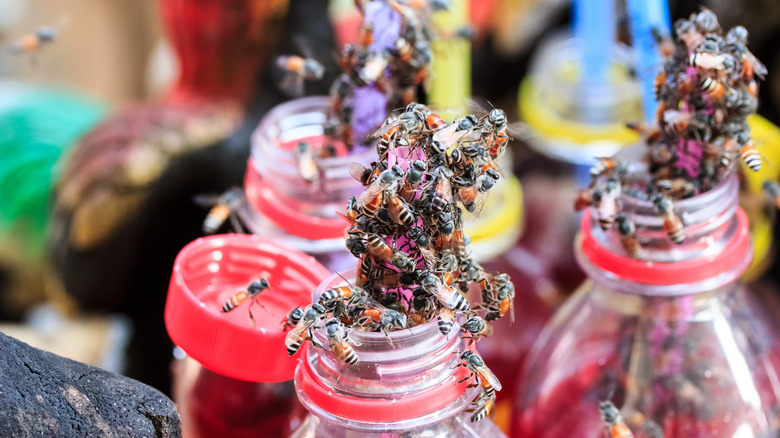
Aggie 11/Shutterstock
It's not just hungry diners who are drawn in by sweet drinks, sugary desserts, and protein-rich meals. Bees and wasps are common and can be aggressively annoying, and unwanted guests at patio tables, particularly in warmer months. While they are a nuisance for most people, for those that are allergic to bee or wasp stings, a single sting can send them into anaphylactic shock, which could lead to death. Even if you're not allergic, a single sting is painful and many stings can result in extreme swelling, and, in very rare cases, serious reactions. Sweet scents are particularly appealing to bees and wasps, and open trash bins, dirty tables, and uneaten food left on unoccupied seats make outdoor dining areas all the more appealing to them. Restaurants might try to manage the problem with citronella candles or insect traps, but those aren't foolproof, particularly when there are a lot of them.
When a stinging insect shows up in the middle of a meal, diners can knock drinks off tables, tip over plates, or even get hurt if someone reacts in a panic. Buzzing guests aren't just bad for business, they can be real hazard for public health.



